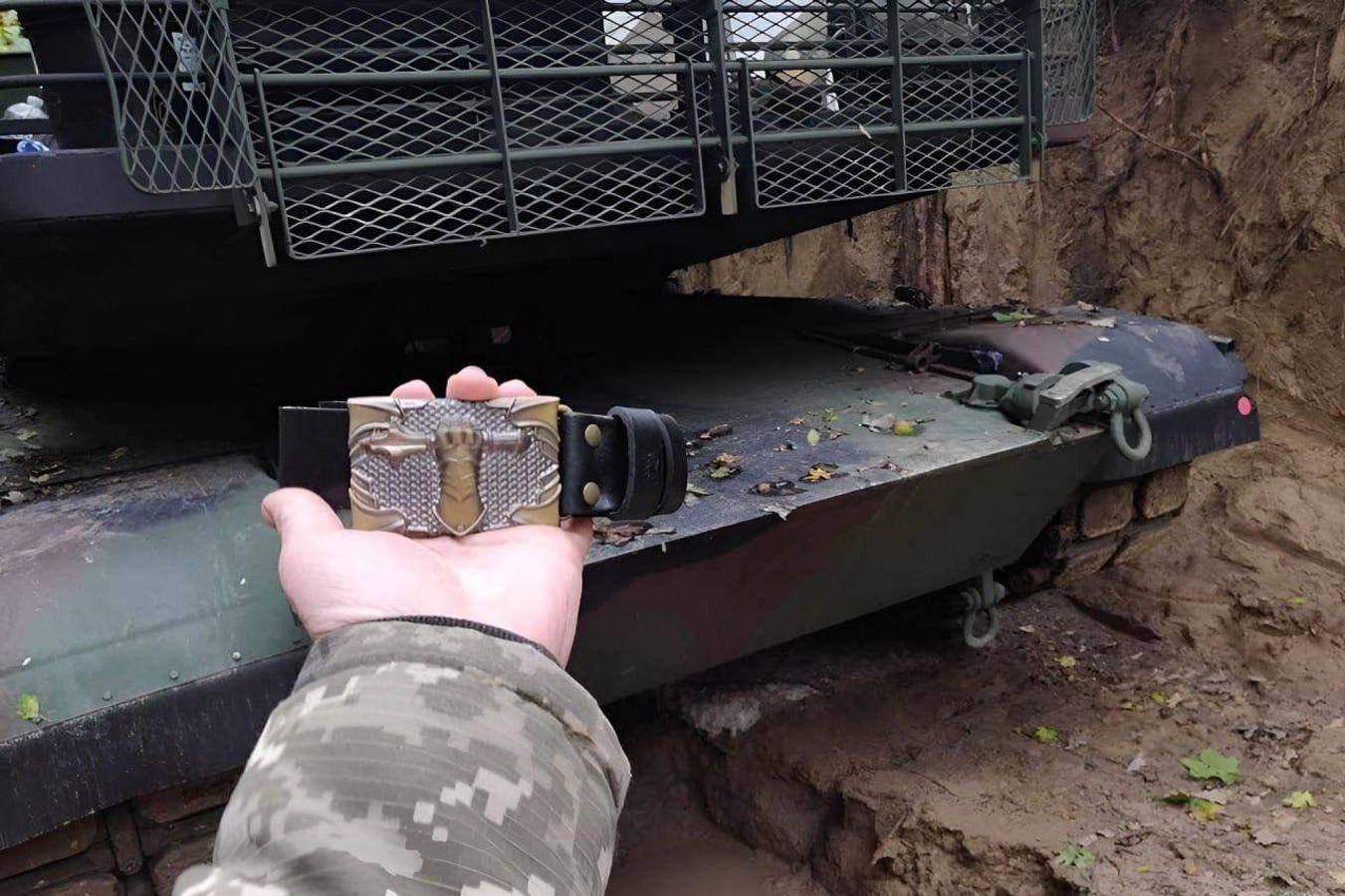Ukraine’s American-made M-1 Abrams tanks apparently began rolling toward the front line in Ukraine earlier this month. A photo that circulated online on Nov. 6 seems to depict an M-1 staging somewhere in eastern Ukraine.
A second, more recent photo purporting to depict a Ukrainian M-1 is harder to verify as authentic. In any event, the M-1s in the photos should be Situational Awareness models of the classic, four-person Abrams tank.
The M-1A1SA isn’t the best M-1. That would be the U.S. Army’s System Enhancement Package version 3. But the 2006-vintage M-1A1 has the advantage of being abundant. The Americans had around 650 of the 67-ton tanks as recently as 2022—and plan to retire them within two years as more M-1A2s roll out of General Dynamics’ tank plant in Lima, Ohio.
All that is to say, in giving Ukraine an initial batch of 31 M-1A1SAs, the U.S. government makes it possible to give to Ukraine many more M-1s … assuming, of course, pro-Russian Republicans in the U.S. Congress don’t block future aid to Ukraine.
When the administration of U.S. president Joe Biden announced the M-1 donation, back in January, some observers assumed the tanks would be M-1A1 Firepower Enhancement Package models, hundreds of which the U.S. Marine Corps recently had retired as it finished shuttering all of its tank battalions.
Then in March, several media outlets reported the tanks would come from the bigger stock of available M-1A1SAs. The Pentagon “made the decision to buy the M-1A1 variant which will enable us to significantly expedite delivery timelines, and deliver this important capability to Ukraine by the fall of this year,” Pentagon press secretary Pat Ryder said.
The M-1A1FEP and M-1A1SA actually aren’t all that different. They both have the same 120-millimeter smoothbore main fun that arms all M-1A1s and A2s, as well as fast and accurate fire-controls, digital maps displaying the Blue Force Tracker battlefield network and far-target locators that can help the crew to spot faraway targets for artillery.
What the M-1A1 models lack, compared to the newer A2s, is the latter tanks’ digital architecture, datalink for programmable ammunition and pair of third-generation thermal sights: one each for the gunner and commander. The A1s have just one full thermal sight—an older second-gen model for the gunner.
In U.S. service, the A2s also have the latest depleted-uranium armor. The A1s also have uranium armor, albeit an older type, but U.S. policy requires General Dynamics to remove the uranium and replace it with tungsten before the tanks ship to a foreign operator.
It’s not clear how much more protection uranium offers compared to tungsten; in any case, the M-1 is one of the world’s best-protected tanks. Its gun is powerful out to a range of thousands of yards. Its optics and fire-controls are world-class. Its turbine engine can burn a wide array of fuels and push the tank to a top speed of 42 miles per hour.
Ukraine’s first 31 M-1s are enough to equip one battalion in one brigade in an army that has a hundred brigades. So far, they’re a niche capability in a military that has more than 50 surviving German-made Leopard 2s and also has received the first couple dozen of nearly 200 Leopard 1s. And even these Western tanks are greatly outnumbered by Ukraine’s thousand or so Soviet-style T-64s, T-72s and T-80s.
But with time and political will, Ukraine could get a lot more M-1s. Any old M-1 hull—the U.S. Army has around 3,000 in storage—can become an M-1A1SA. Army technicians select an old M-1 from the sprawling vehicle park at Anniston Army Depot in Alabama, recondition its automotive systems and ship it off to Lima, where General Dynamics swaps out its armor and installs new subsystems.
The whole process can take between six and nine months. It took Morocco four years to get all 222 M-1A1SAs it ordered in 2016.
However, if the starting point is a recently-active M-1A1—say, some ex-U.S. Army National Guard tank—the preparations for export should go faster. All General Dynamics would need to do in that case is open up the hull and turret, remove the uranium armor and replace it with tungsten armor.
It’s entirely possible the Biden Administration has gotten ahead of the curve on a future M-1 pledge to Ukraine by quietly directing the Army to funnel additional tanks into the upgrade pipeline. Actually completing a second transfer of M-1s might be contingent on Congressional funding, however.
If and when that happens, don’t be shocked if the White House doesn’t actually announce it. It’s worth noting that the United States recently gave Ukraine Assault Breacher engineering vehicles without ever announcing the transfer. Sweden also has donated armored vehicles without making the transfer public.
More and more, Ukraine’s allies are donating weapons to the war effort without making a big show of it. The first evidence of a second batch of donated M-1s might be a photo of the tanks arriving in Ukraine sometime next year.
Read the full article here





